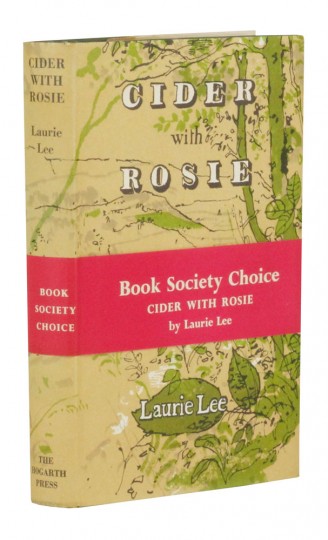

Go slightly right down the field to a stile and gate, then continue up the next field to a gate at the top and turn left along a track. Follow it down and, immediately before Trillgate Farm, turn left over a stile into a field.

Many of the places in and around the village mentioned in Cider With Rosie are readily identifiable today, such as The Woolpack Inn and old schoolhouse opposite, and the valley remains as beautiful as it ever was.įrom Bulls Cross walk to the south end of the lay-by and turn left onto a tarmac-covered footpath, the Wysis Way. Lee died in 1997 and is buried in Slad churchyard. The third, A Moment of War (1991), recounts his experiences there during the Civil War.

The second volume, As I Walked Out One Midsummer Morning, published in 1969, describes his journey from Gloucestershire to Spain as an itinerant fiddle player. He was susceptible to illness all his life, but in his later years he managed to complete his autobiographical trilogy. The picture of an avuncular figure living a bucolic idyll was not a strictly accurate one – much of the author’s time was spent in London. To some extent Lee became a prisoner of a Cider With Rosie industry. Readers from all over the world identified with his magical evocation of rural English life, and the book has not been out of print since. It was with the publication of Cider With Rosie in 1959 that Laurie Lee became a household name. He was never very prolific – much of his energy appears to have been poured into love affairs – but he wrote plays for radio and was involved in filmmaking during World War II. Afterwards he established a reputation as a poet, mixing with the literati of the day. Lee spent a considerable time in Spain, and became involved in the Spanish Civil War and the struggle against Franco. The story of his life is, anyway, an interesting one. Some of the episodes recounted in the book are said to have been products of Lee’s imagination, but – as he said himself – it was the ‘feeling’ of his childhood that he was endeavouring to capture. The book charts, in poetic language, the experiences of a child living in a world that is within living memory and yet has quite disappeared. This autobiographical account of a Cotswold childhood has, for thousands of students, been part of their English Literature syllabus.įor anyone visiting the area, Cider With Rosie is well worth reading, but it is especially pertinent here as it is largely set in Slad, where Lee was brought up and lived for much of his life. And yet he is not instantly remembered for his poetry, but for his enchanting book, Cider With Rosie. The Slad Valley is one of the least spoiled parts of the Cotswolds, and it has a long-standing association with the area’s most important literary figure, the poet Laurie Lee (1914–97).


 0 kommentar(er)
0 kommentar(er)
